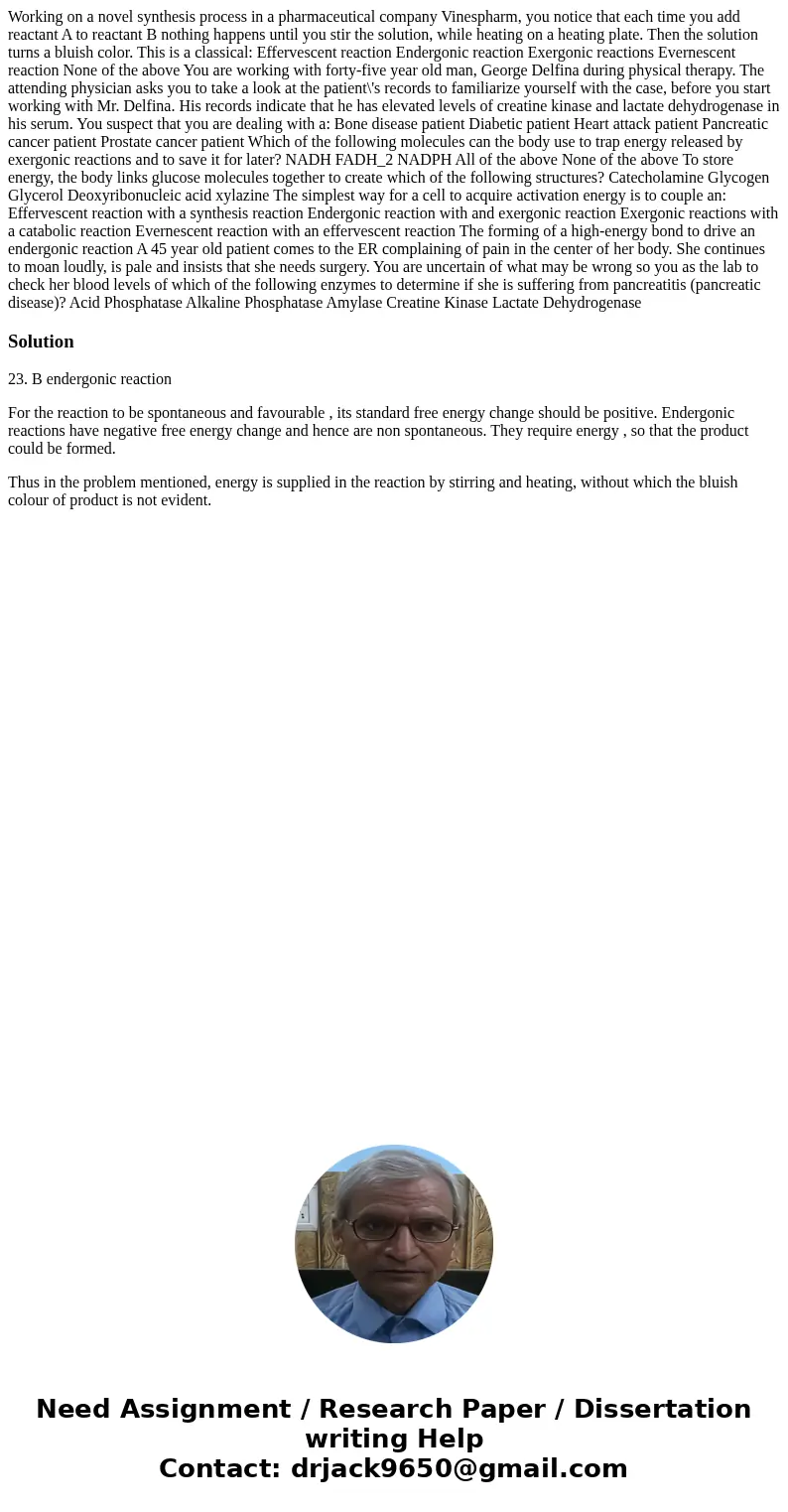Working on a novel synthesis process in a pharmaceutical com
Working on a novel synthesis process in a pharmaceutical company Vinespharm, you notice that each time you add reactant A to reactant B nothing happens until you stir the solution, while heating on a heating plate. Then the solution turns a bluish color. This is a classical: Effervescent reaction Endergonic reaction Exergonic reactions Evernescent reaction None of the above You are working with forty-five year old man, George Delfina during physical therapy. The attending physician asks you to take a look at the patient\'s records to familiarize yourself with the case, before you start working with Mr. Delfina. His records indicate that he has elevated levels of creatine kinase and lactate dehydrogenase in his serum. You suspect that you are dealing with a: Bone disease patient Diabetic patient Heart attack patient Pancreatic cancer patient Prostate cancer patient Which of the following molecules can the body use to trap energy released by exergonic reactions and to save it for later? NADH FADH_2 NADPH All of the above None of the above To store energy, the body links glucose molecules together to create which of the following structures? Catecholamine Glycogen Glycerol Deoxyribonucleic acid xylazine The simplest way for a cell to acquire activation energy is to couple an: Effervescent reaction with a synthesis reaction Endergonic reaction with and exergonic reaction Exergonic reactions with a catabolic reaction Evernescent reaction with an effervescent reaction The forming of a high-energy bond to drive an endergonic reaction A 45 year old patient comes to the ER complaining of pain in the center of her body. She continues to moan loudly, is pale and insists that she needs surgery. You are uncertain of what may be wrong so you as the lab to check her blood levels of which of the following enzymes to determine if she is suffering from pancreatitis (pancreatic disease)? Acid Phosphatase Alkaline Phosphatase Amylase Creatine Kinase Lactate Dehydrogenase
Solution
23. B endergonic reaction
For the reaction to be spontaneous and favourable , its standard free energy change should be positive. Endergonic reactions have negative free energy change and hence are non spontaneous. They require energy , so that the product could be formed.
Thus in the problem mentioned, energy is supplied in the reaction by stirring and heating, without which the bluish colour of product is not evident.

 Homework Sourse
Homework Sourse